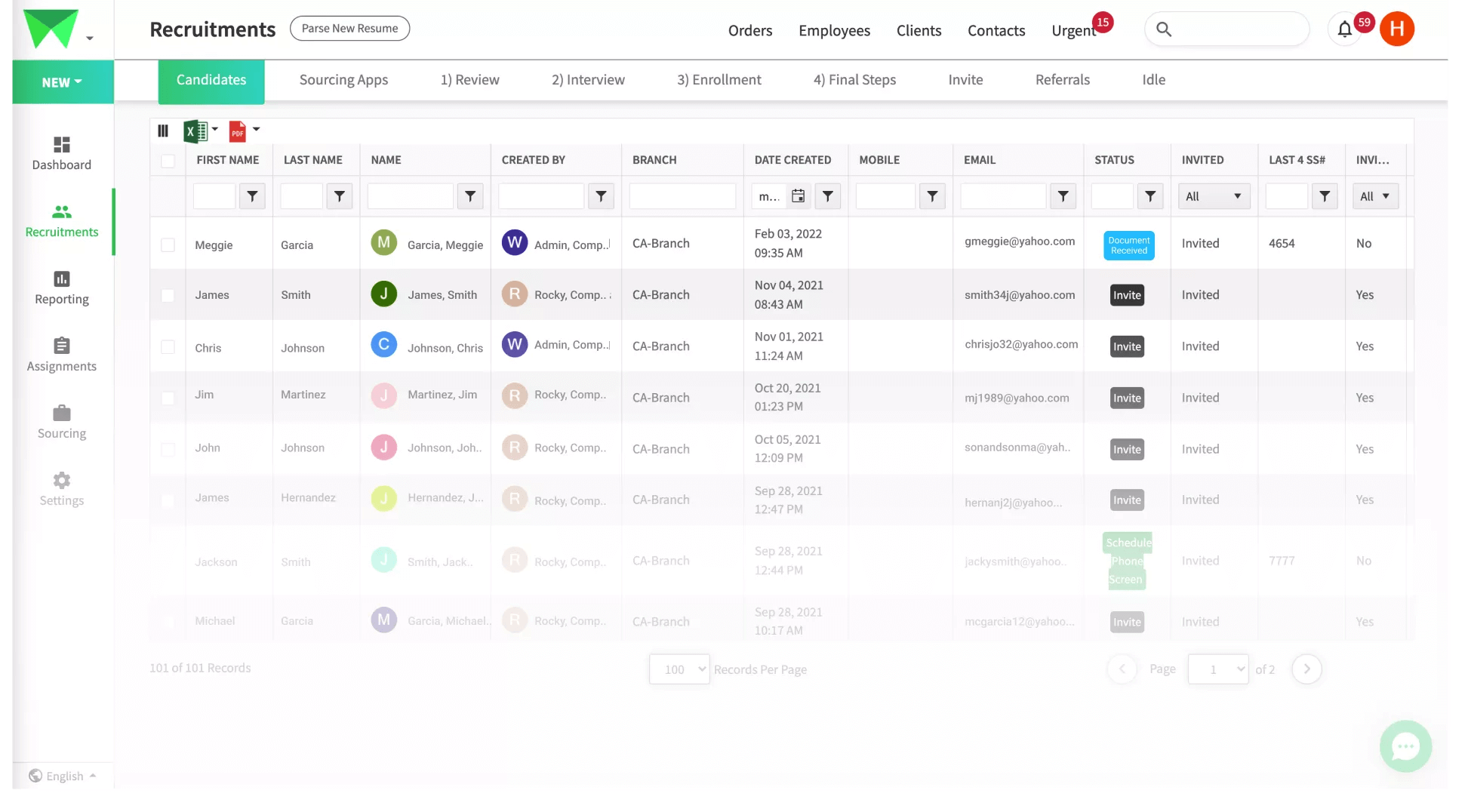Enhance Staffing Procedures with Tailored Management Software
Enhance Staffing Procedures with Tailored Management Software
Blog Article
Letting Loose the Power of Data: Enhancing HR Strategies With Cutting-Edge Staffing Administration Software
By utilizing the power of information analytics, companies can not just enhance their employment techniques yet additionally enhance staff member retention and efficiency. The synergy in between data-driven insights and advanced innovation provides an engaging possibility for Human resources specialists to transform their strategy in the direction of talent management.
Value of Data-Driven Human Resources Approaches
Why have data-driven human resources approaches become crucial in modern service procedures? In today's affordable and hectic company setting, companies are increasingly relying upon data-driven insights to make informed choices. Data-driven human resources methods enable companies to optimize their labor force monitoring, employment procedures, and worker interaction initiatives. By analyzing data associated with employee performance, turnover prices, and ability gaps, human resources divisions can determine fads, forecast future requirements, and develop proactive options to address challenges.
Data-driven HR techniques also play a critical role in boosting employee contentment and retention. Through the evaluation of worker comments, performance testimonials, and training outcomes, human resources experts can customize individual growth plans, acknowledge high-potential workers, and foster a society of continuous knowing and development within the company. Furthermore, data-driven understandings enable human resources teams to straighten their strategies with the general company purposes, ensuring that ability management initiatives directly contribute to organizational success.
Benefits of Staffing Monitoring Software
Utilizing staffing monitoring software simplifies the employment and onboarding processes for HR departments, boosting efficiency and accuracy in skill procurement. One considerable benefit of this software program is the capability to streamline prospect data, making it quickly available for employment teams. By having all candidate information in one area, HR experts can efficiently track candidate development, interact properly with prospective hires, and guarantee a seamless recruitment experience.
In addition, staffing monitoring software application frequently consists of features such as resume analyzing and key phrase matching, which help in promptly identifying top prospects that match the task needs. This automation decreases the moment invested in hands-on return to screening, enabling human resources personnel to concentrate on even more calculated jobs. staffing management software. Furthermore, these systems can integrate with work boards and social media platforms, increasing the reach of task posts and attracting a diverse pool of candidates
Additionally, analytics and reporting devices within staffing monitoring software application provide important understandings right into recruitment metrics, such as time-to-fill and cost-per-hire. This data-driven method allows HR teams to make enlightened choices, optimize recruitment methods, and boost general working with procedures. By leveraging these advantages, companies can enhance their talent acquisition initiatives, improve prospect experience, and ultimately construct a solid workforce.
Enhancing Recruitment Processes With Information
By leveraging data, companies can make even more enlightened decisions throughout the recruitment lifecycle, inevitably leading to much better hires and enhanced retention rates. One vital means data enhances recruitment procedures is by optimizing work posts based on understandings from past successful hires.
Additionally, information analytics can enhance the screening and choice process by recognizing patterns in candidate certifications and performance indicators. Overall, incorporating data right into recruitment procedures empowers organizations to make smarter working with decisions and construct high-performing groups.
Improving Worker Retention With Modern Technology

One means technology can enhance staff member find here retention is via using staff member involvement platforms. These platforms enable real-time feedback, recognition, and communication in between employees and monitoring, fostering a culture of recognition and support. Furthermore, technology can make it possible for customized discovering and development programs customized to private employee needs and job goals, increasing job fulfillment and loyalty.
Moreover, information analytics tools can help organizations recognize patterns and patterns connected to worker turnover, allowing them to take positive procedures to address possible problems before they rise. On the whole, by leveraging technology effectively, companies can develop an extra supportive helpful hints and engaging work environment that encourages employees to remain and grow within the firm.
Making The Most Of Workforce Productivity With Data

Through the analysis of data, HR divisions can identify patterns and patterns that influence performance degrees. For instance, by tracking worker job hours and task conclusion prices, organizations can maximize work schedules to ensure that jobs are successfully dispersed amongst employee. Furthermore, information can disclose ability spaces within the labor force, allowing human resources to apply targeted training programs that boost worker capabilities and overall productivity.
Additionally, data-driven efficiency analyses make it possible for supervisors to give particular responses and support to employees, fostering a society of continual renovation. Generally, leveraging data to maximize labor force performance is a strategic approach that equips companies to attain their goals properly and effectively.
Final Thought
Finally, making use of cutting-edge staffing monitoring software can substantially boost HR techniques by leveraging the power of information. By integrating data-driven recruitment procedures, enhancing employee retention with modern technology, and optimizing labor force efficiency, organizations can improve their operations, make more educated decisions, and eventually achieve better success in handling their human capital. Embracing these technological developments is crucial in the ever-evolving landscape of personnel management.
Data-driven Human resources strategies enable companies to enhance their labor force management, recruitment procedures, and worker engagement initiatives. By assessing information connected to employee efficiency, turnover prices, and skill spaces, Human resources departments can recognize fads, anticipate future demands, and create aggressive solutions to attend to challenges.

Report this page